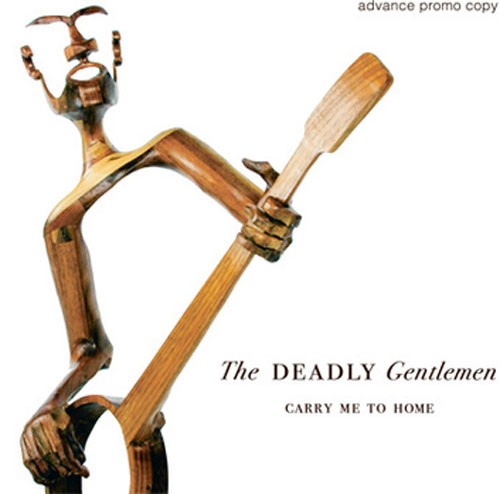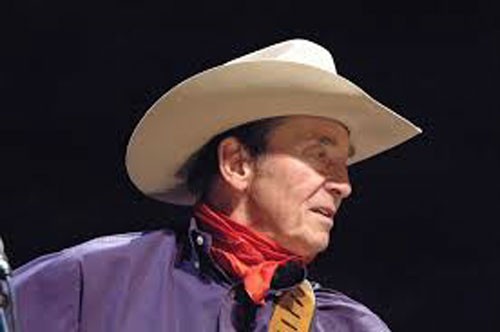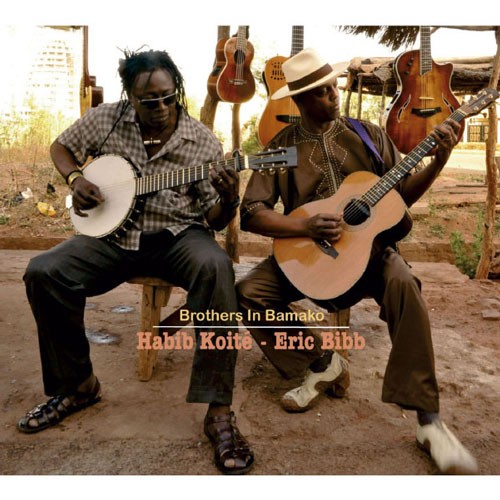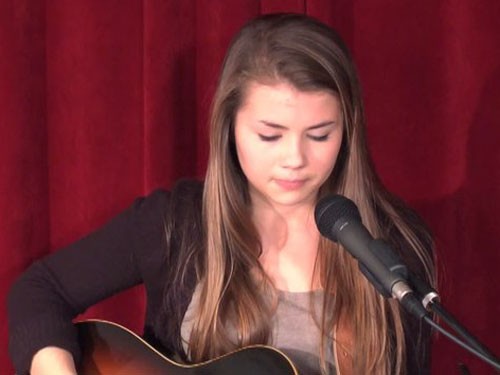Some Thoughts on Evolving Media
CDs by The Deadly Gentlemen, Ian Tyson, Eric Bibb and Hayley Reardon
By: David Wilson - Jun 16, 2013
Each month of late as my contact with recording artists expands, I am more and more often asked if I prefer a cd or a download. I generally prefer the experience of a physical cd in my hand. There is something more organic about finding the package in the mailbox, reading the return address and trying to guess what is inside and what pleasure the contents might bring. I like, while listening, having access to track listings and descriptions, personnel and even lyrics when they are included. On top of that, I find a cd is always easier to manipulate and access when driving, no doubt the result of years of practice.
Sometimes only a download is available and I grudgingly click on the buttons and work my way through the process. I suspect that at times I am distracted or in the middle of something else and the download ends up stored in some sector of my hard drive, isolated and lost at the end of a labyrinthine path along which I may never again stumble.
A week or so ago, one of my favorite new emerging artists sent me an email asking if I would be willing to download a soon to be released EP and comment on it and wanting to hear what she was up to, I agreed. The request and the process got me to examining my resistance to the change and I experienced a certain amount of self ridicule at my reluctance to accept changing technology.
I mean, I have always prided myself on identifying and adopting new technology in advance of the general population and here I am dragging my feet when any rational analysis tells me that the cd is a transient medium and the end of its effectiveness is clearly on the horizon.
I got my first phonograph player as a Christmas present when I was 5. The first recording I ever owned (I’m A Little Teapot, don’t remember the artist), was a 10 inch, 78 rpm disc, and I was quick to note that it was much thinner than the ones in my grandparent’s phonograph cabinet and quite different in form then the box of Edison cylinders stored in one of their closets. For my following birthday I was given an album of 78s. The artist was Gene Autry and my favorite song was “Back In The Saddle Again.”
Clearly, single song recordings were the backbone of the audio marketplace, many discs were still single sided and double sided discs had an A side, primary, and a B side, secondary. Albums with multiple discs were only produced when an artist had experienced enough popular demand for their work that such would be in demand.
In my early teens, the technology advanced to allow even smaller, thinner singles that rotated more slowly at 45 rpm and then the EP, extended play, with 3-4 songs, followed by 10 inch 33.3 rpm lps (long plays), and soon after 12 inch lps.
As market forces lifted the lp into prominence over singles, new artists were pressured to come up with multiple tracks to meet the requirements and the overall result was a drop in musical quality. Earlier artists had had extended periods in which to develop their performances, releasing their accomplishments one by one as singles. Newer artists no longer had that luxury. Recording companies rushed immature artists with limited repertoires into studios and to my mind destroyed many potential careers with false promises abandoning those artists without a second thought when their weakness became financially obvious. (They also at this time started to hijack, extort and steal publishing rights from the artists, but that is a subject for another time.)
Tape did not become a viable medium for mass sales until cassettes appeared at the end of the ‘50s, but it took 20 years and walkman technology to really maximize their penetration (8-tracks came and went in that time span). The cd appeared in the late ‘70s and within a decade had dominated the market. The profitability of cds was buoyed by lots of archive music that could be transferred to the new medium at much reduced cost and a high mark-up on a new technology which soon became taken for granted. Recording companies milked its consumers with high prices and hoards of under-talented, unproven, yet-to-mature artists and so lowered the reputation of their product that fans stopped buying and started looking for the music that pleased them elsewhere. They found it on the internet.
Apple created a business model for marketing music and suddenly we were back in the singles, musically speaking, game.
Now, an artist can sell a single performance for a price most people are willing to pay (even if I still think it is more often than not, overpriced) and more and more musicians are finding they do not need record companies and can cut out the middle-man. Yes, there are advantages and drawbacks to this for both the musician and the buying public, but less of them than in the system they replace.
With SD cards as storage devices, MP3 players and other devices that use SD cards, fans can build their own collections, create their own albums, set up their own playlists and store more music on a device the size of a postage stamp than my grandparents or those before them would have heard in an entire lifetime. It is easy to see how future media can hold more, be more readily accessible and cost less. It is hard to see how future changes will actually redefine the nature of the music market. I am only sure of one thing and that is that the changes will be profound.
Here is a brief look at several of those cds that have sat too long on my “To be reviewed stack” as spoken of two postings ago.
Carry Me To Home
The Deadly Gentlemen
I suppose that it was inevitable that hardcore punk bluegrass would eventually happen, and to their credit, The Deadly Gentlemen do it with a high degree of literary skill and musical credibility. All the songs here, save two, are written and composed by banjoist Greg Liszt, and the excepted two are Listz adaptations of “The Road Is Rocky” by Bill Monroe and cult classic, “Wanted Man” by Hilliard,Pockriss.
I came across this group while searching to find out what had happened to bass player, Sam Grisman after he had left Bearfoot two years ago. Clearly he has found a home and I am so tardy with this notice that the group is ready to release a new cd within the month, this time on Rounder.
But for this release and I realize that what I am about to say is a bit rash, even so, it feels right to me. If William Burroughs or Kenneth Patchen wrote Bluegrass lyrics, they would sound very much like these.
Rough edged, almost never pretty, gritty to the point of despair, but to my ears even on the edge of chaos, always interesting. Certainly not for everybody’s taste, but well worth a listen to determine if you are among their audience. If you are,finishing their current tour they return to the Boston area and will be on stage at The Lizard Lounge, July 10th.
Raven Singer
Ian Tyson
Stony Plains Records
SPCD1361
Ian Tyson endures. Granted his voice has continually suffered erosion on many fronts, especially range and pitch, but his performances are still enthralling. Ian is a storyteller and at this point I really am unaware of any songwriter who can match, let alone top the continual stream of rich, involving, embracing content that packs characterization and story line into a few simple verses. When Ian performs his material, the passion and commitment to the tale is evident in his presentation.
Historical characters, “Charlie Goodnight’s Grave, ” archetypical composites, “Saddle Bronc Girl,” far away places, “Under African Skies,” all are dissected and reconstructed by Ian and the subtleties will keep you coming back to learn more with each listening. Few writers can pack as much into as few words. A time will come when future singers will mine the wealth of material he has createdand will leave as his legacy.
I have been a fan for decades, and I am a fan today.
Brothers In Bamako
Habib Koite – Eric Bibb
Stony Plains Records
SPCD1362
Eric Bibb,winner this year of the Blues Music Award for Acoustic Artist of the year, continues to expand the range of his musical foundations. A chance meeting with Habib Koite at an international music project caused both of them to recognize each in the other a kindred spirit that was strong enough to result in a bond that has already stretched to a decade. Both musicians are grounded in the music of the common people. Eric’s roots are in Blues, American folk and Musical Theatre. Habib, formally trained at the National Arts Institute in Bamako, Mali, is a master of a multiplicity of West African guitar and banjo styles. More important, Habib is a griot. There is no simple way to fully describe the complexity of a griot. I will take liberties here with a sketchy and simplistic designation of a griot as a poet-historian-genealogist-counselor-chronicler of culture-musician, but if you want to know more the previous link will take you to a more comprehensive source.
Suffice it to say that when these two artists combine their talents we are exposed to a musical thread which links the blues and gospel music of our culture to the west African well from which it sprang. It flows naturally, it does not require any refined musical attitude to access it, it communicates on intellectual, emotional and physical levels.
Although the lyrics are sung in African French, English and one or two other African dialects, the music is always compelling. The video below will give you a sample that will leave you wanting more or satisfy your curiosity.
Where The Artists Go
Hayley Reardon
Kingswood Records
I want to be very careful here because I think Hayley Reardon is a considerable talent and I want you to appreciate her for her skills and accomplishments while I am pointing out where I think her development as displayed in this release can stand some honing.
Her writing, style-wise is very good indeed, far better than many of her more celebrated elders, and content-wise is adolescent. This is tricky, because if she is writing for her peers, this is appropriate and relevant. For a more general audience it may not be as effective. There are moments of universality, but they are not as well aimed or well fashioned as they might be.Time and more experience is the prescribed solution to this.
Her voice is, while not unique, distinctive and pleasant, often a bit over-breathy for my taste, as that sometimes raises incongruities for me when contrasted to the lyrical content. I know I often harp on articulation and Hayley’s diction could stand considerable work. In the video posted below, I had a great deal of difficulty understanding her introduction and my understanding did not improve when she began to sing. I would take full responsibility for my lack of understanding were it not for the fact that there are any number of artists whose pronunciation I understand for every word they sing. Not so with Hayley.
As a singer, aside from the aforementioned breathiness, she sings with a fine sense of pitch, an even better awareness of melody and rhythm, and her phrasing is competent if predictable. She has a reasonable range though I did not get any sense in this release of how much power she has available to call on.
The production values for this release are extremely good, arrangements are interesting and support the emotional content of the material though sometimes I think they overwhelm Hayley’s intimate style of vocal.
Whether we have here an outstanding artist on her way to a brilliant career or a bright but brief flash in the pan depends I think entirely on her diligence and committment. I think she might yet be something very very special indeed.











